Ahead of season 5 of Formula 1: Drive to Survive, due for release at the end of February, we ran two ‘Teams Landscape’ studies for Formula 1, both in the UK and the USA, with a view to breaking down how each of the teams resonates across the Formula 1 fanbases in both countries. Hoping to understand whether the existing Drive to Survive fanbase was notably different to the wider Formula 1 audience, we also included a bucket of the series’ fans in the study.
Analysis
1. Consistency across the teams
Across all the teams, we see a similar makeup, with no teams appealing to drastically different audiences. The lack of differentiated fanbases for each of the teams tells us that Formula 1’s team aspect is not necessarily what draws in fans and viewers. Fans are primarily interested in the sport and their favourite drivers, regardless of their team.
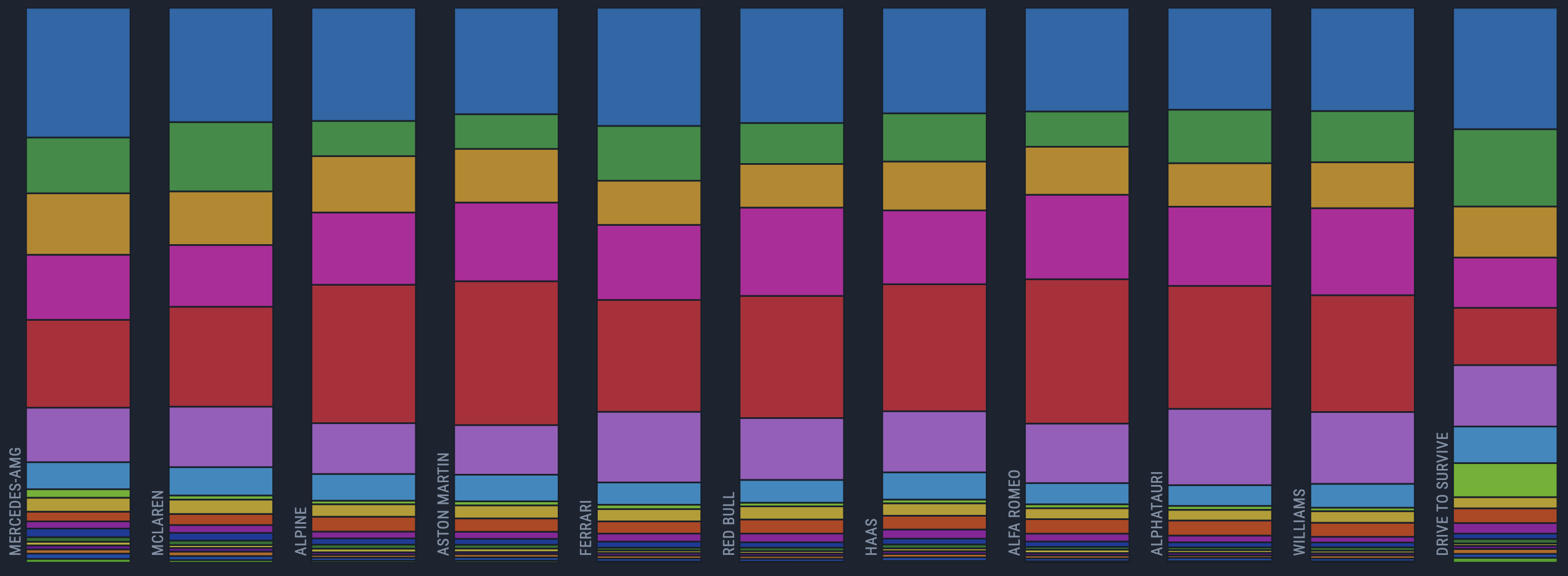
2. The devil’s in the detail
Though on the macro scale the teams share a similar makeup, key patterns start to emerge when we zero in on the details.
McLaren stood out as the team with the strongest Gen Z following, across both US and UK markets. With younger drivers, such as Lando Norris - a keen gamer and a streamer on Twitch -, they seem to be doing the best job of captivating younger audiences.
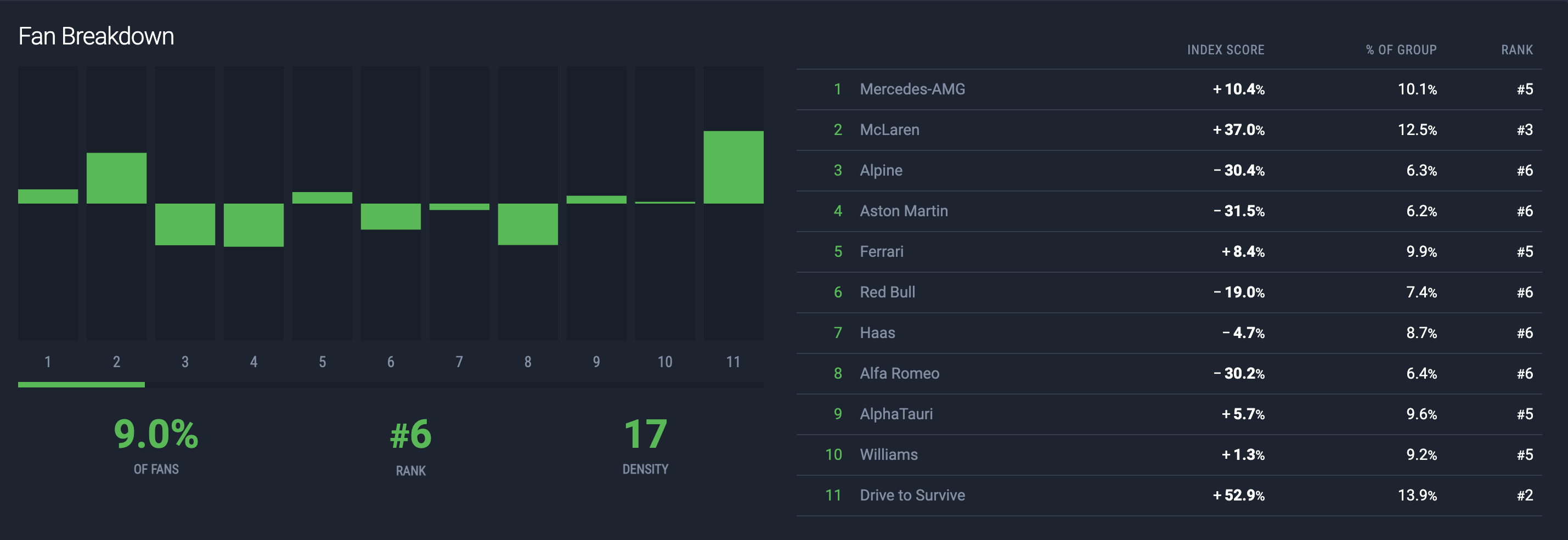
Mercedes, Ferrari and Red Bull drew the largest number of Multi-Sports Fans, highlighting their permeation into more mainstream entertainment and sports markets.
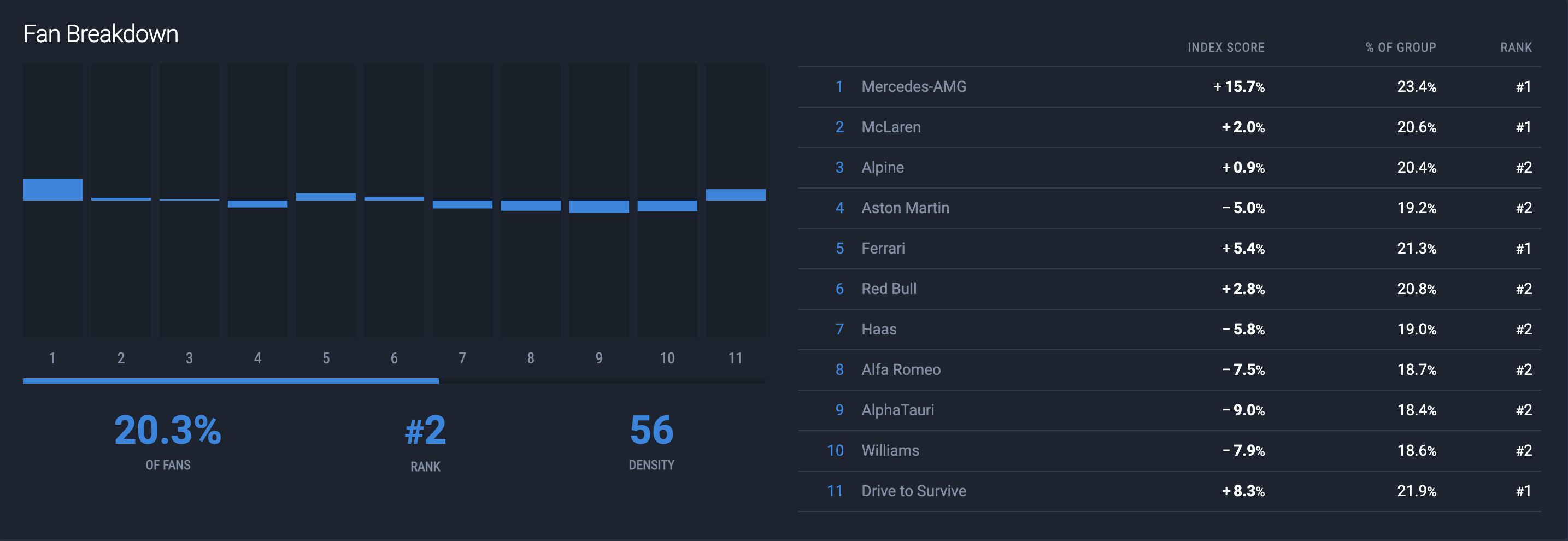
Across the UK and the USA, Aston Martin, Alpine and Alfa Romeo had the highest proportion of their respective audiences pertaining to the F1 Superfans tribe. This could hint at missed opportunities for penetration into broader audiences, or at a healthy dose of favouritism from highly knowledgeable fans.
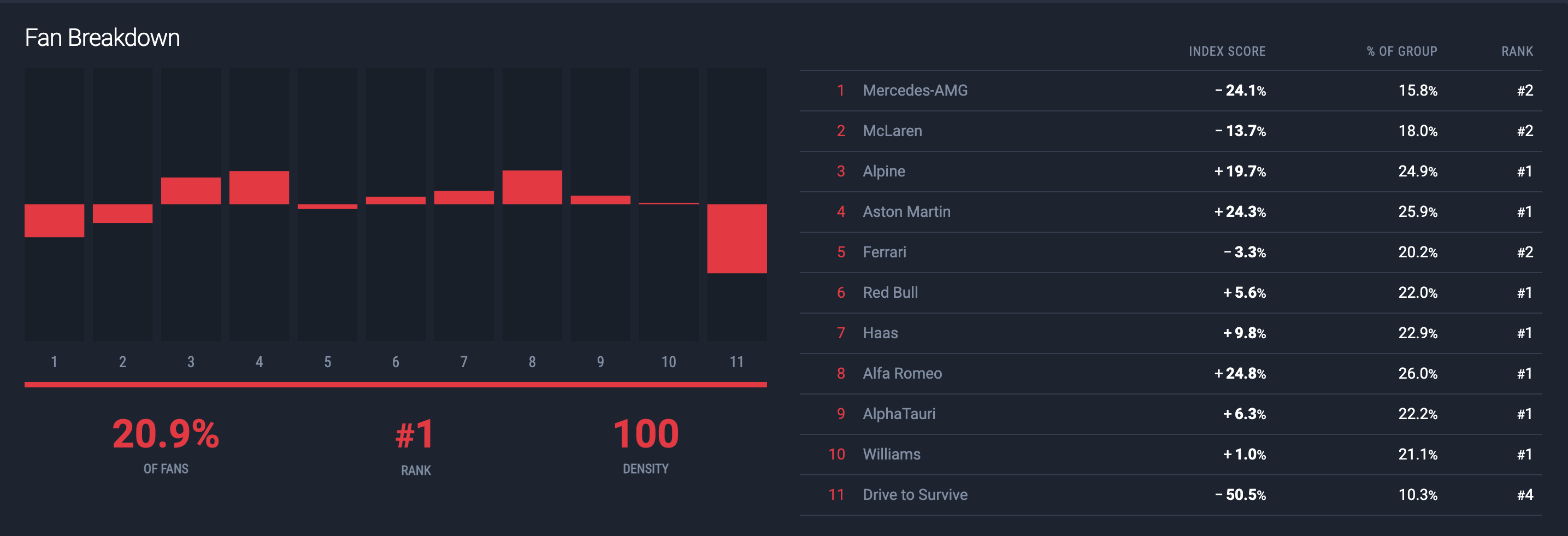
3. How does Drive to Survive compare?
The chart below shows that there is a visible distinction between the Drive to Survive audience and that of the rest of the teams. Where the teams garner a negligible following from Grime & Hip Hop Fans, Drive to Survive excels on this front, also showing a greater contingent of Gen Z Entertainment Fans. For contrast, F1 Superfans showed a significantly greater engagement with the Formula 1 teams than with the TV series.
Our key takeaway from this is that Drive to Survive provides a significant and valuable appeal to younger, broader audiences. This speaks to the understanding that there is potential for the attraction of these audiences through the diversification of content over a number of media channels.
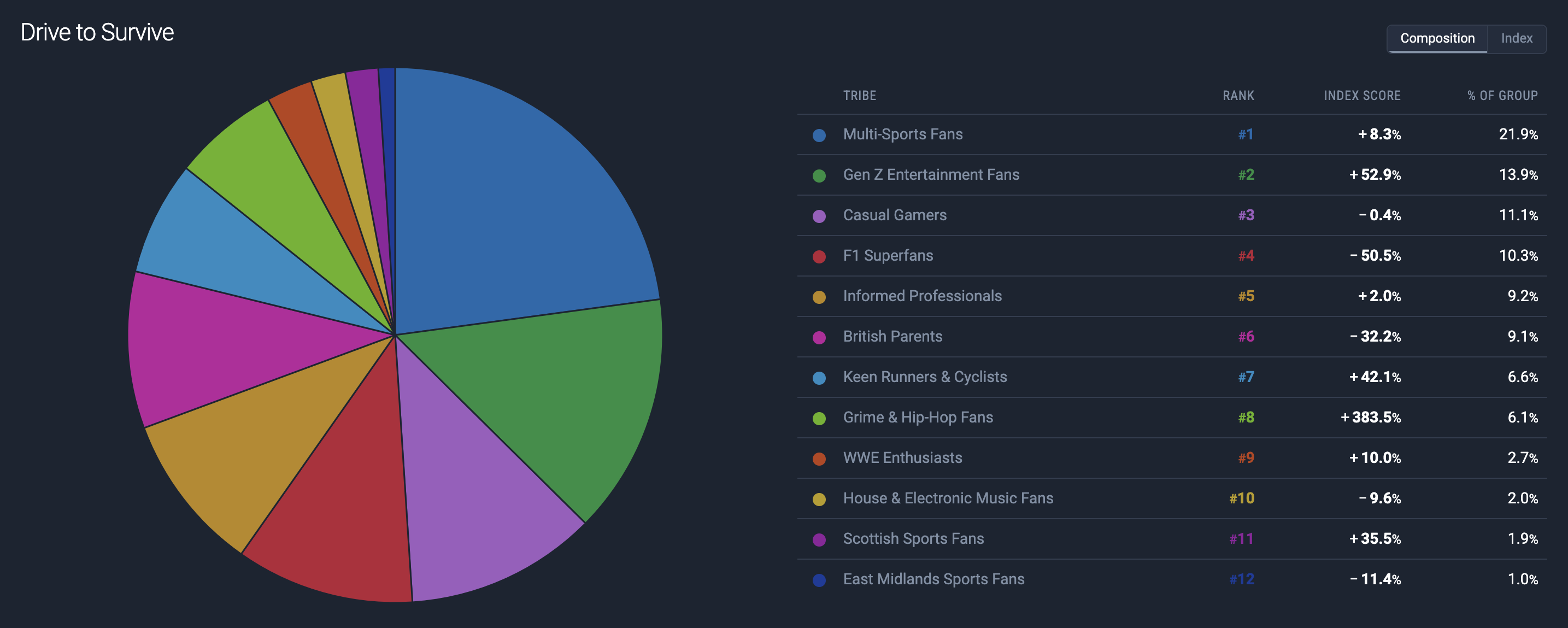
Conclusion
Our analysis leans towards the conclusion that Formula 1 as a sport is less team-centric, with no massively fleshed out team culture, in terms of audiences. Fans follow drivers between teams and, as a global sport, regional favouritism is less prevalent.
To learn more about how Fifty can help you understand your audiences, get in touch with us at [email protected] or book a demo directly with our team.






































